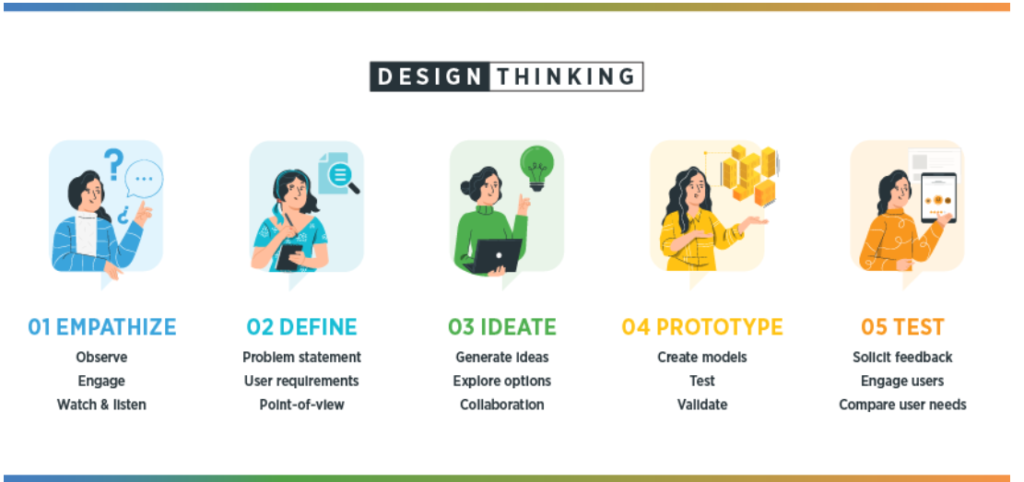In May 2020, I decided to release an eBook to share my journey through the struggle of finding employment again during a layoff and government shutdown. At the same time, I didn’t realize new skills were merging, such as design thinking. Of course, these skills can pivot into the non-technical side of Cybersecurity.
Design Thinking
What is design thinking? Design thinking is a method to understand end-user behavior and redefine problems to create solutions.

Empathize
The first step for the design thinking method is empathy. To create this product, I observed other people’s problems and my own within the cybersecurity workforce. Investigating the hiring process, I noticed some common problems everyone faced, the following disconnects: between recruiters and job candidates with technical terminology, recruiters, and job description preparation, and finally, the recruiter and hiring manager. The next step is to define the problem statement for this product.
Define
The second step was defining the problem statement, which led to understanding that everyone was navigating the cybersecurity discipline. Therefore, the Point- of View (POV) from the reader’s perspective was extremely important. The next step is to ideate.
Ideate
The third step was to ideate. During this phase of the project, creating ideas was the highlight for design thinking. Researching to create a title for the book, collaborating with marketing and design personnel, and finally planning a pre-launch event.
Since this was an eBook, the last two steps in the design thinking process does not apply now.
Brand new skills were determined to apply to non-technical roles within Cybersecurity. On the contrary, to my previous blogs, I must share Dr. Mansur Hasib’s definition of Cybersecurity.
“Cybersecurity is the mission-focused and risk-optimized governance of information, which maxims confidentiality, integrity, and availability using a balanced mix of people, policy, and technology while perennially improving over time.”
What roles can you apply for with these newfound skills?
Design Program Manager
What is a Design Program Manager? This article by Courtney K. explains the role of a DPM. This role consists of blending program management, having a creative mindset, and keeping team members algin to finish projects quickly. But how does this translate into a role in Cybersecurity?
Referencing my handy dandy 😊 publication NIST 800-181 Cybersecurity Workforce. Here is an example of two positions that will pivot with an addition to learning about the design method through some online learning courses.

How did I stumble across this role?
June 2021, I decided to start my job search and research industries outside the government-industry. Taking the risk to broaden my expertise has enlightened me on a new journey to exciting industries and positions I never thought about.
Since June 2021, I have applied for 45 positions, for a Program Manager or a Scrum Master. I connected with employees at high tech companies and learned how to interview for these tech companies.
This process has allowed me to redefine my career and learn about this DPM role. In Oct 2021, I applied for a DPM position because I realized during my interviews that when asked, “Why are you looking for a new position?”
“I often respond with my creative mindset is not needed for the current industry I currently work in.” After going through multiple interviews and reading multiple job descriptions. I understand that I could collaborate with creative mindset people such as content creators, UX designers, and a design lead as a DPM.
Currently, I’m still on the hunt to receive a new position that utilizes my creative mindset, program management skills, entrepreneurship, and agile framework by the end of Dec 2021.
